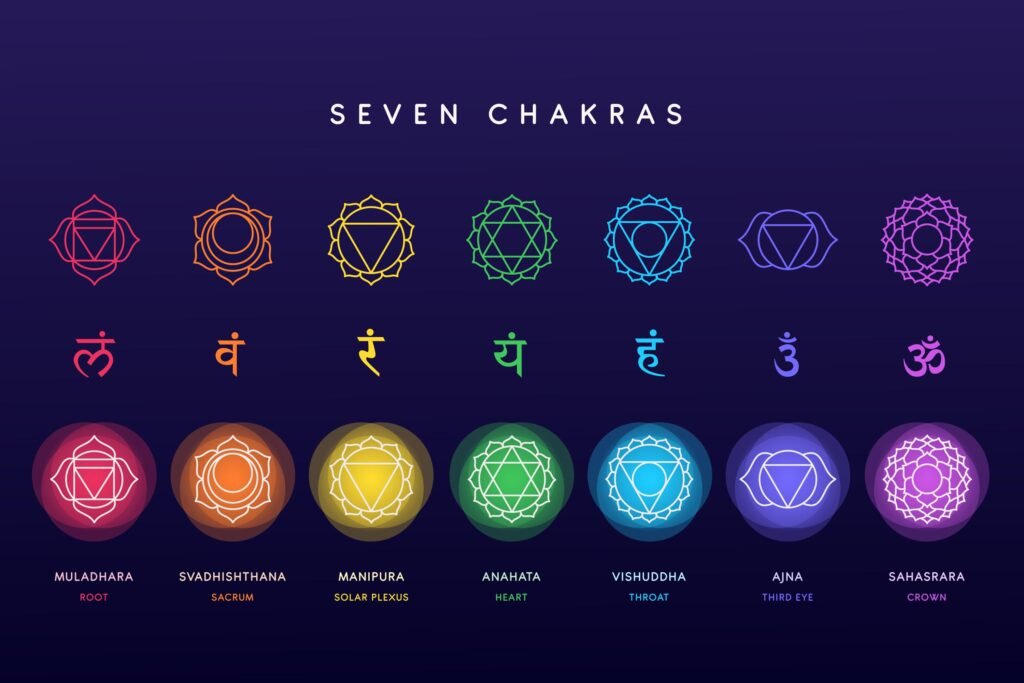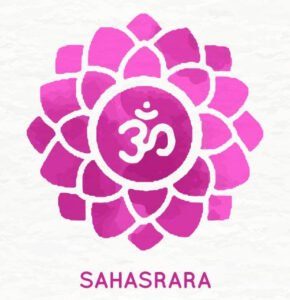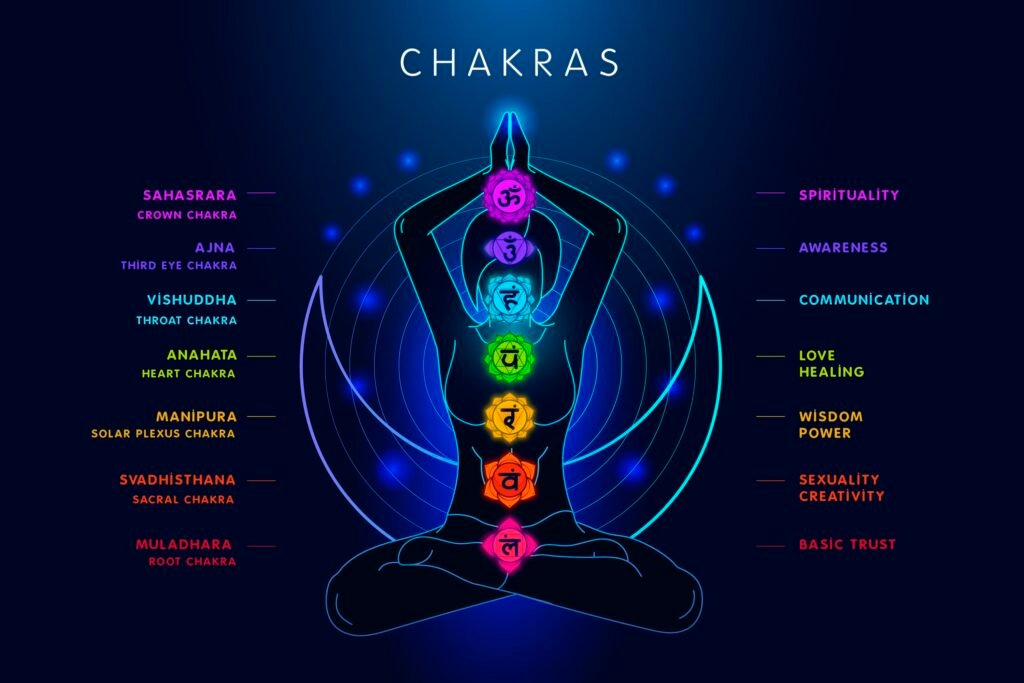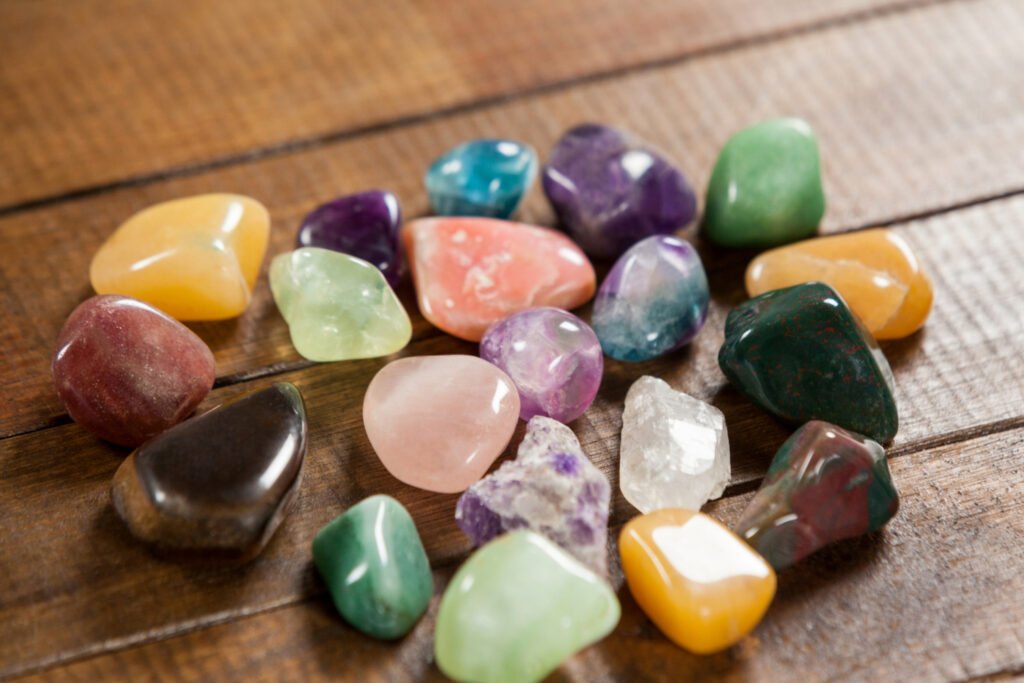The concept of chakras has been around for thousands of years and is an integral part of many Eastern spiritual traditions. The word “chakra” comes from Sanskrit and means “wheel” or “disk.” The seven chakras are believed to be energy centers within the body that correspond to different aspects of our physical, emotional, and spiritual well-being.
Each of the seven chakras is associated with a specific color, sound, and vibration. They are believed to be connected to different organs and glands in the body and are said to influence everything from our physical health to our emotional state. Understanding the chakras and how they work can help individuals achieve balance and harmony in their lives.
While the concept of chakras may seem esoteric or mystical to some, there is growing scientific evidence to support the idea that these energy centers do exist within the body. Many people incorporate practices such as yoga, meditation, and energy healing into their daily routine to help balance and activate their chakras. In the following article, we will explore each of the seven chakras in more detail and discuss how they can be balanced and aligned for optimal health and well-being.
Overview of The 7 Chakras
Chakras are energy centers in the body that help regulate physical, emotional, and spiritual well-being. There are seven main chakras that are located along the spine, from the base to the crown of the head. Each chakra is associated with a specific color, element, sound, and aspect of consciousness.

The seven chakras are:
- Root Chakra – Located at the base of the spine, associated with the color red, the element earth, and the sense of smell. This chakra governs survival instincts, grounding, and stability.
- Sacral Chakra – Located in the lower abdomen, associated with the color orange, the element water, and the sense of taste. This chakra governs creativity, sexuality, and emotional balance.
- Solar Plexus Chakra – Located in the upper abdomen, associated with the color yellow, the element fire, and the sense of sight. This chakra governs personal power, self-esteem, and willpower.
- Heart Chakra – Located in the center of the chest, associated with the color green, the element air, and the sense of touch. This chakra governs love, compassion, and emotional balance.
- Throat Chakra – Located in the throat, associated with the color blue, the element ether, and the sense of hearing. This chakra governs communication, self-expression, and creativity.
- Third Eye Chakra – Located in the center of the forehead, associated with the color indigo, the element light, and the sense of intuition. This chakra governs intuition, imagination, and spiritual insight.
- Crown Chakra – Located at the top of the head, associated with the color violet, the element thought, and the sense of knowing. This chakra governs spiritual connection, enlightenment, and consciousness.
Understanding the seven chakras and how they function can help individuals achieve balance and harmony in their physical, emotional, and spiritual lives.
Root Chakra (Muladhara)

Location and Color
The Root Chakra, also known as Muladhara, is located at the base of the spine. Its color is red, which represents vitality, strength, and energy.
Function and Importance
The Root Chakra is responsible for grounding and connecting individuals to the earth. It is associated with survival instincts, security, and stability. When balanced, this chakra provides a sense of safety and security, allowing individuals to feel grounded and stable in their lives.
Signs of Imbalance
When the Root Chakra is imbalanced, individuals may experience feelings of insecurity, fear, and anxiety. Physical symptoms may include lower back pain, constipation, and fatigue. On the other hand, an overactive Root Chakra may lead to feelings of greed, materialism, and aggression.
In order to balance the Root Chakra, you can practice grounding exercises such as walking barefoot on the earth or practicing yoga poses that focus on the lower body. Eating root vegetables and using grounding essential oils such as patchouli or vetiver may also be helpful.
It is important to note that the Root Chakra is the foundation for all other chakras, and therefore, it is crucial to maintain its balance in order to achieve overall balance and well-being.
Sacral Chakra (Svadhishthana)

Location and Color
The Sacral Chakra, also known as Svadhishthana, is located in the lower abdomen, just below the navel. Its color is orange, which represents creativity, joy, and pleasure.
Function and Importance
The Sacral Chakra is associated with emotions, creativity, and sexuality. It is responsible for the flow of energy related to pleasure, enjoyment, and intimacy. When this chakra is balanced, one can experience healthy relationships, emotional stability, and creativity.
Signs of Imbalance
An imbalance in the Sacral Chakra can lead to various physical and emotional issues. Some signs of imbalance may include low libido, lack of creativity, mood swings, and difficulty in expressing emotions. On the other hand, an overactive Sacral Chakra can lead to addiction, emotional dependency, and obsession with pleasure.
To balance the Sacral Chakra, you can practice yoga, meditation, and other healing practices. Eating orange-colored foods, such as oranges, carrots, and sweet potatoes, can also help in balancing this chakra. Regular exercise and spending time in nature can also help in maintaining a healthy Sacral Chakra.
Solar Plexus Chakra (Manipura)

Location and Color
The Solar Plexus Chakra, also known as Manipura, is located in the upper abdomen area, near the stomach. The color associated with this chakra is yellow.
Function and Importance
The Solar Plexus Chakra is responsible for one’s personal power, self-esteem, and confidence. It is the center of one’s willpower and motivation. When this chakra is balanced, one feels confident and in control of their life. It is important to keep this chakra balanced as it affects one’s ability to make decisions and take action.
Signs of Imbalance
When the Solar Plexus Chakra is imbalanced, you can experience feelings of low self-esteem, lack of confidence, and indecisiveness. Physical symptoms may include digestive issues and stomach problems. It is important to balance this chakra through meditation, yoga, and other practices that promote self-confidence and self-love.
In summary, the Solar Plexus Chakra plays a crucial role in one’s personal power and self-esteem. By keeping this chakra balanced, one can feel confident and in control of their life.
Heart Chakra (Anahata)

Location and Color
The Heart Chakra, also known as Anahata, is located at the center of the chest, right above the heart. Its color is green, representing growth, harmony, and balance.
Function and Importance
The Heart Chakra is responsible for love, compassion, and emotional balance. It is the center of our being, connecting the physical and spiritual aspects of our lives. When this chakra is open and balanced, individuals experience feelings of love, joy, and inner peace. It is also believed to be the seat of the soul, where the divine and human meet.
Signs of Imbalance
An imbalanced Heart Chakra can lead to emotional distress, anxiety, and depression. You might experience feelings of loneliness, bitterness, and resentment. Physical symptoms may include heart problems, high blood pressure, and breathing difficulties. To balance this chakra, youcan practice acts of kindness, forgiveness, and self-love. Meditation, yoga, and spending time in nature can also help to open and balance the Heart Chakra.
Overall, the Heart Chakra is a crucial component of our spiritual and emotional well-being. When balanced, it allows individuals to experience love, compassion, and inner peace, leading to a healthier and happier life.
Throat Chakra (Vishuddha)

Location and Color
The Throat Chakra, also known as Vishuddha, is located in the throat region and is associated with the color blue. It is the fifth chakra in the body’s energy system.
Function and Importance
The Throat Chakra is responsible for communication, self-expression, and creativity. It helps individuals to express their thoughts and feelings clearly and effectively. A balanced Throat Chakra also allows individuals to listen and communicate effectively with others. This chakra is important for those who work in fields that require communication, such as teaching, public speaking, and writing.
Signs of Imbalance
An imbalanced Throat Chakra can result in difficulty expressing yourself, fear of speaking, and social anxiety. It can also lead to physical symptoms such as sore throat, neck pain, and thyroid problems. On the other hand, an overactive Throat Chakra can result in excessive talking, interrupting others, and being overly critical.
To balance the Throat Chakra, individuals can practice activities such as singing, speaking affirmations, and journaling. Blue gemstones such as aquamarine and lapis lazuli can also be used to balance this chakra. It is important to maintain a healthy balance in all chakras to promote overall well-being.
Third Eye Chakra (Ajna)

Location and Color
The Third Eye Chakra, also known as Ajna, is located between the eyebrows. Its color is indigo, which represents intuition, wisdom, and spiritual awareness.
Function and Importance
The Third Eye Chakra is associated with the pineal gland, which regulates sleep and wake cycles. It is also linked to intuition, psychic abilities, and spiritual insight. When this chakra is balanced, you can trust your intuition, see the bigger picture, and have a deep understanding of the world around them.
Signs of Imbalance
When the Third Eye Chakra is imbalanced, you might experience physical symptoms such as headaches, eye strain, and sinus issues. You might also struggle with mental symptoms such as anxiety, depression, and lack of clarity. In extreme cases, you might experience hallucinations or delusions.
To balance the Third Eye Chakra, you can practice meditation, visualization, and mindfulness. You can also incorporate indigo-colored foods such as blueberries and blackberries into your diet. With a balanced Third Eye Chakra, a person can tap into their intuition and spiritual awareness, leading to a deeper understanding of themselves and the world around them.
Crown Chakra (Sahasrara)

Location and Color
The Crown Chakra, also known as Sahasrara, is located at the top of the head. Its color is usually depicted as violet or white.
Function and Importance
The Crown Chakra is associated with spiritual connection and enlightenment. It is believed to be the center of consciousness and the gateway to higher states of consciousness. When balanced, this chakra can help you achieve a sense of unity with the universe and a deep understanding of their purpose in life.
Signs of Imbalance
An imbalanced Crown Chakra can manifest in various ways. Some common signs include a lack of connection to spirituality, a feeling of disconnection from the world around them, and a lack of purpose or direction in your life. Physical symptoms may include headaches, migraines, and sensitivity to light and sound.
To balance the Crown Chakra, you can try meditation, yoga, and other spiritual practices. It is also important to cultivate a sense of purpose and connection to something greater than yourself.
Chakra Balancing Techniques

Balancing the chakras is essential for maintaining your physical, emotional, and spiritual well-being. There are various techniques to balance the chakras, including:
1. Meditation
Meditation is a powerful tool to balance the chakras. It helps in calming the mind, reducing stress, and promoting relaxation. You can practice chakra meditation by focusing on each chakra and visualizing its color and energy.
2. Yoga
Yoga is another effective way to balance the chakras. Each yoga pose is associated with a specific chakra, and practicing these poses can help in balancing the corresponding chakra. For example, the tree pose is associated with the root chakra, while the cobra pose is associated with the heart chakra.
3. Aromatherapy
Aromatherapy involves the use of essential oils to balance the chakras. Each essential oil is associated with a specific chakra and can be used to balance it. For example, lavender oil is associated with the crown chakra, while rose oil is associated with the heart chakra.
4. Crystal Healing

Crystal healing involves the use of crystals to balance the chakras. Each crystal is associated with a specific chakra and can be used to balance it. For example, amethyst is associated with the crown chakra, while rose quartz is associated with the heart chakra.
5. Chanting
Chanting is another effective way to balance the chakras. Each chakra is associated with a specific sound, and chanting these sounds can help in balancing the corresponding chakra. For example, the sound “lam” is associated with the root chakra, while the sound “om” is associated with the crown chakra.
6. Reiki
Reiki is a form of energy healing that can help in balancing the chakras. It involves the use of hands-on healing, where the practitioner channels energy into the patient’s body to balance the chakras.
7. Color Therapy
Color therapy involves the use of colors to balance the chakras. Each chakra is associated with a specific color, and exposure to these colors can help in balancing the corresponding chakra. For example, the color red is associated with the root chakra, while the color purple is associated with the crown chakra.
By practicing these techniques, you can balance their chakras and promote overall well-being.
Chakra Meditation and Yoga Practices

Chakra meditation and yoga practices are powerful tools for balancing the seven chakras. These practices aim to activate and harmonize the energy centers in the body, leading to physical, mental, and emotional well-being.
One of the most popular chakra yoga practices is the Sun Salutation, also known as Surya Namaskar. This sequence of yoga postures is designed to stimulate all the major chakras in the body, starting from the root chakra and moving up to the crown chakra. Other yoga postures that are beneficial for the chakras include the Warrior Pose, the Tree Pose, and the Lotus Pose.
Meditation is another effective way to balance the chakras. One simple technique is to focus on each chakra individually, starting from the root chakra and moving up to the crown chakra. As you focus on each chakra, visualize it as a spinning wheel of energy, and imagine the energy flowing freely through it. You can also use mantras or affirmations to enhance the meditation practice.
In addition to yoga and meditation, there are other practices that can help balance the chakras, such as aromatherapy, crystal healing, and sound therapy. These practices work by using specific scents, crystals, or sounds to activate and balance the energy centers in the body.
Overall, chakra meditation and yoga practices are powerful tools for achieving physical, mental, and emotional balance and well-being. By incorporating these practices into your daily routine, you can enhance your overall health and vitality.
Cultural Significance of Chakras

Chakras have a significant cultural significance in many Eastern traditions, including Hinduism, Buddhism, and Jainism. The concept of chakras is believed to have originated in ancient India, where they were first mentioned in the Vedas, the oldest scriptures of Hinduism.
In Hinduism, chakras are believed to be energy centers that correspond to different aspects of human experience, including physical, emotional, and spiritual. Each chakra is associated with a specific color, sound, and element, and is said to govern different organs and glands in the body.
In Buddhism, chakras are seen as a way to achieve enlightenment and liberation from suffering. The practice of meditation and visualization is used to activate and balance the chakras, leading to a deeper understanding of the nature of reality.
Jainism also recognizes the importance of chakras in spiritual practice, with a focus on the purification of the soul and the attainment of spiritual purity.
Overall, the cultural significance of chakras lies in their ability to provide a framework for understanding and exploring the human experience, as well as a path to spiritual growth and enlightenment.

